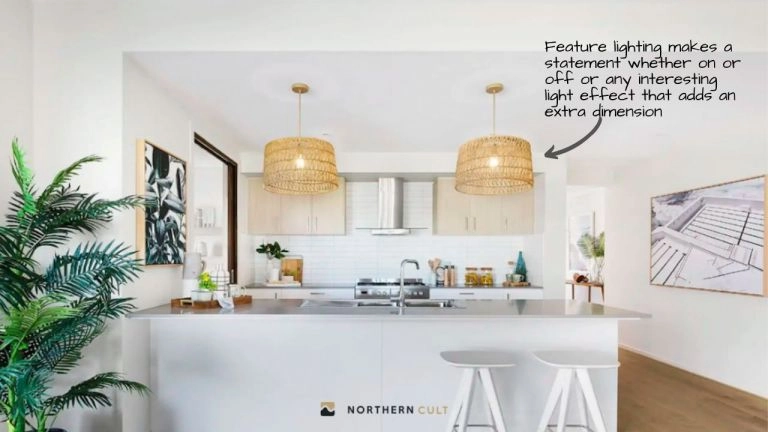Designing effective kitchen lighting involves a thoughtful understanding of various factors to create a well-lit and functional space. One essential guideline is to consider the three primary types of lighting: ambient, task, and accent lighting. Ambient lighting provides overall illumination and sets the tone for the room. Task lighting focuses on specific work areas, such as the countertop or stove, to ensure ample visibility for various kitchen activities. Accent lighting highlights specific features or creates a visual focal point, adding depth and interest to the kitchen.
The kitchen’s layout and size are crucial considerations when establishing lighting guidelines. In larger kitchens, a combination of different lighting types is often necessary to ensure even illumination. Smaller kitchens may require more strategic placement of fixtures to avoid over-lighting or shadows. Understanding the specific needs of the space is key to determining the appropriate lighting layout.
Ceiling height plays a significant role in choosing the right fixtures. For kitchens with high ceilings, consider larger fixtures that can adequately fill the space with light. Conversely, in kitchens with lower ceilings, smaller and more streamlined fixtures are often preferable to avoid a cramped feeling. Striking the right balance between fixture size and ceiling height is essential for achieving a harmonious lighting design.
Natural light should be incorporated into the overall lighting plan. Maximize the use of windows and skylights to bring in daylight, which not only enhances the kitchen’s visual appeal but also contributes to energy efficiency. Consider window treatments that allow for flexible control of natural light, ensuring that the kitchen remains well-lit while minimizing glare and heat.

The color temperature of lighting is a crucial consideration in kitchen design. Warmer color temperatures, typically ranging from 2700K to 3000K, create a cozy and inviting atmosphere. Cooler color temperatures, around 3500K to 4000K, are ideal for task lighting as they mimic natural daylight, enhancing visibility. Consistency in color temperature throughout the kitchen contributes to a cohesive and visually pleasing environment.
Layered lighting is a fundamental principle in kitchen lighting design. Combining different types of lighting fixtures creates layers of light that cater to various needs. Ambient lighting provides overall illumination, task lighting ensures functionality in specific areas, and accent lighting adds a decorative and visually appealing touch. The synergy of these layers contributes to a well-balanced and versatile kitchen lighting scheme.
Under-cabinet lighting is a practical and effective guideline for enhancing visibility on countertops. LED strips or puck lights installed beneath cabinets illuminate the workspace, ensuring that tasks like food preparation are performed with precision. Under-cabinet lighting not only serves a functional purpose but also adds a subtle and stylish element to the kitchen’s overall aesthetic.
Consider the color palette of your kitchen when selecting lighting fixtures. Light fixtures with finishes that complement the overall color scheme contribute to a cohesive design. Coordinating fixture finishes with other elements in the kitchen, such as cabinet hardware or faucets, creates a unified and harmonious look.

Dimmer switches offer flexibility in controlling the intensity of kitchen lighting. Installing dimmers allows you to adjust the brightness according to the time of day, specific tasks, or the desired mood. Dimmable fixtures, especially in dining areas, contribute to a more relaxed and inviting atmosphere during meals or gatherings.
The placement of lighting fixtures is critical for achieving uniform illumination. Avoid creating shadows or dark spots by strategically placing fixtures throughout the kitchen. Consider the layout of workspaces, such as the stove, sink, and countertop, and ensure that each area is adequately illuminated to facilitate safe and efficient kitchen activities.
For kitchens with islands, pendant lights or a combination of pendant and recessed lights can be an effective guideline. Pendant lights add a decorative element while providing focused task lighting over the island. The size and height of pendant lights should be chosen carefully to ensure they complement the island’s dimensions and don’t obstruct the line of sight.
Cabinet lighting is an often overlooked but valuable addition to kitchen lighting design. Installing lights inside cabinets, especially those with glass doors, adds depth and visual interest. This type of accent lighting showcases the contents of the cabinets and can be particularly effective in displaying glassware, dishes, or decorative items.

Smart lighting technology has become increasingly popular in kitchen design. Integrating smart bulbs or fixtures allows for convenient control through mobile apps or voice commands. This technology provides the flexibility to adjust lighting settings, change color temperatures, and create customized lighting scenes to suit different activities or moods in the kitchen.
Consider the energy efficiency of lighting fixtures to align with sustainability goals. LED bulbs are an excellent choice for their energy efficiency, long lifespan, and minimal heat emission. Energy-efficient fixtures not only contribute to environmental sustainability but also result in cost savings over time.
A cohesive and well-thought-out lighting plan enhances the overall functionality and aesthetics of the kitchen. Regular maintenance is essential to ensure that fixtures remain in optimal condition. Check bulbs, clean fixtures, and address any issues promptly to guarantee a consistently well-lit and visually pleasing kitchen environment.
Adhering to kitchen lighting guidelines involves a holistic approach that considers the three types of lighting, the kitchen’s layout, ceiling height, natural light, color temperature, and the integration of various fixtures. By incorporating layered lighting, under-cabinet and cabinet lighting, and embracing smart technology, you can create a versatile and visually appealing kitchen that meets both functional and aesthetic needs.

5 BASIC KITCHEN LIGHTING DESIGN RULES OF THUMB NorthernCult

Custom lighting in soffits we built. Soffit with crown mol… Flickr

Get Outlets Out of Sight on the Kitchen Island
/ZhW5MJ4wHpFGHUvimdCQ8tA0np5YU11tet0wQJOboQA-2SizAJxFoMxCDUSVHyptUTZ-hNhpfol_DVXZcClzNdo-56a576a25f9b58b7d0dd0a37.jpeg)
The Most Appropriate Lighting Type for Each Room My Decorative

Related Posts:
- Kitchen Grow Light
- Glass Kitchen Ceiling Lights
- Antique Kitchen Ceiling Lights
- Best Fluorescent Light For Kitchen
- Blown Glass Kitchen Lighting
- Battery Powered Under Kitchen Cabinet Lighting
- Light Pink Kitchen Utensils
- Light Colored Granite Kitchen Countertops
- Kitchen Faucet With Light
- Dark Kitchen Cabinets With Light Granite Countertops